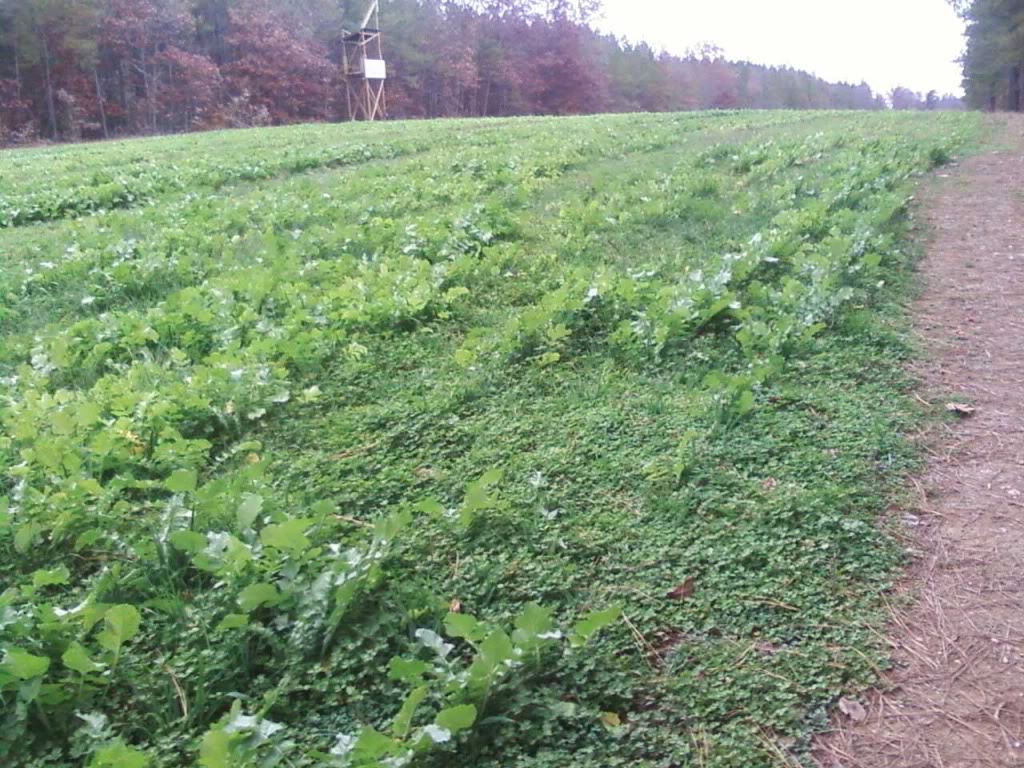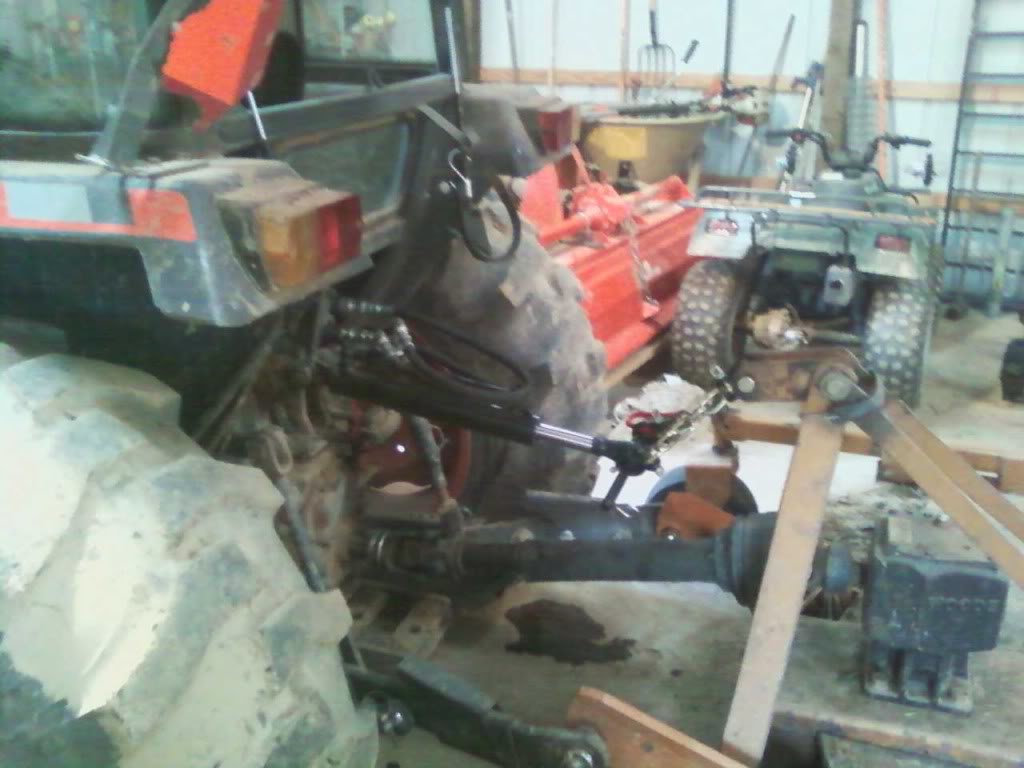$7K is not reasonable. Afraid I am looking for something that doesn't exist.
Yoderjac do you mix clover or brassica (very small seed) with your cereal grains in the broadcast seeder? What is WR/CC/PTT/GHR? Does your seeder have a mixer in it? I have been doing spray-throw-and mow (or cultipack). I also have a rolling plow (offset disk) that I am going to start using rather than spray, especially in recovered hay/brush meadows. I am trying to keep the CPD (cost per deer) below $5K! I agree, while watching deer graze, they eat a lot of weeds, even new shoots of Multi flower Rose.
Sorry for using the abbreviations. WR- Winter Rye, CC - Crimson Clover, PTT - Purple top turnips, GHR - Groundhog Radish (Daikon Radish Groundhog is brand name that is cheap and many use).
Yes, my fall seed mix includes the PTT and GHR (which are brassica) in the mix with the WR (cereal). I mix my own seed. I will typically pour about 25 lbs of WR in the spreader first. I'll then add about 1/4 of each type of smaller seed in the fall mix. I'll reach into the spreader and mix it up a bit with my hands. I'll then add another 25 lbs of WR and add the second quarter of each type of small seed. I'll mix that up a bit. I'll repeat this with the remaining seed. I'll typically use about 100lbs of WR total in the spreader at a time.
A lot depends on your soil type. In my case, I have heavy clay with low OM (Organic Matter). No-till methods will build OM over time, but when I first started, my clay would crust. Light disking was necessary to break that crust. I no longer need to to disk as the OM has built over the years and the clay no longer crusts. When you use traditional tillage techniques, you introduce oxygen into the soil which burns the OM you have at a higher rate. Without a healthy microbiome, you need to add a lot of fertilizer. With no-till or (min-till) and planting mixes of seeds that complement each other, you can eventually get to the point where you stop using fertilizer which is a big cost savings. You still want to use lime when necessary to get the pH right. In my case, with heavy clay, and acidic soil, I need almost 4 tons of lime per acre to adjust new ground, but since lime moves slowly through clay, it can be 5+ years before the pH needs 1 ton/ac of maintenance lime. Folks with sandy soil may need to add lime more often as it moves through the sandy soil much more quickly.
So, when I do use a light disk for min-till, from a distance, you would not know the field was tilled. It looks more green than brown. I'm just trying to break the surface slightly. I don't set the disk to be very aggressive and I don't add weight. I've also used a 3pt tiller for this. Rather than setting it on the feet, I raise is with the hitch so the tines are barely touching the top inch of soil and I move more quickly than one does when using a tiller conventionally. Both methods work.
Keep in mind, that disking won't take the place of herbicides. Here is what happens. If you min-till like I describe above, much of the weeds are still rooted and recover quickly and are advantaged over your planted seed. If you till deeper, you are bringing up weed seed into the germination layer and you are introducing oxygen deeper into your soil. So, you lose some of the benefits of no-till/min-till and you still have significant weed competition.
Now, weeds (depending on what kind) may now be a bad thing, but you will have a much higher percentage of weeds. I've learned to be prudent with herbicide uses. Back when I was planting Roundup Ready (RR) soybeans for summer, I would use glyphosate (gly) for burn down and then again once or twice after the beans emerged to keep the weeds down so the bean could canopy. After a pine thinning and using prescribed fire in the pines, marestail (a noxious weed) came up in the pines from the seed bank. Seed got into our fields. Marestail is naturally resistant to gly and it soon began to dominate the field.
I ended up switching from RR soybeans to the mix of buckwheat and sunn hemp for summer. They both germinate quickly and compete well with weeds. I switch to a generic form of Liberty herbicide for burn down before planting for a few years to get the Marestail under control. I now rotate gly and generic Liberty for burndown. I'm using herbicide less frequently and not using the same one back to back. I now have a much healthier mix of weeds in my plots.
So, as you think through whether to continue using herbicides an how, it brings us to the topic of weeds. I want my crops to be advantaged and get a good start, so I like a good burn down, but once they germinate, I'm now very tolerant of weeds in general. As you say, you seed deer eat a wide variety of weeds.
I'm actually going one step further and starting to manage for weeds as deer food and cover. Watch the video at the beginning of this thread:
Weed Management Thread
While I'll always have some food plots, I'm dedicating more of my acreage to this approach which is producing more deer food at a lower cost. The key is getting rid of cool season grasses.
One last caveat I have for you. Not only could your soil type be different than mine, your climate may be different as well. So, what works well for me may or may not for you. You may need to adapt it for your location. I'm in zone 7A in VA. I'm not sure where you are located.
Enough of my gibberish!



